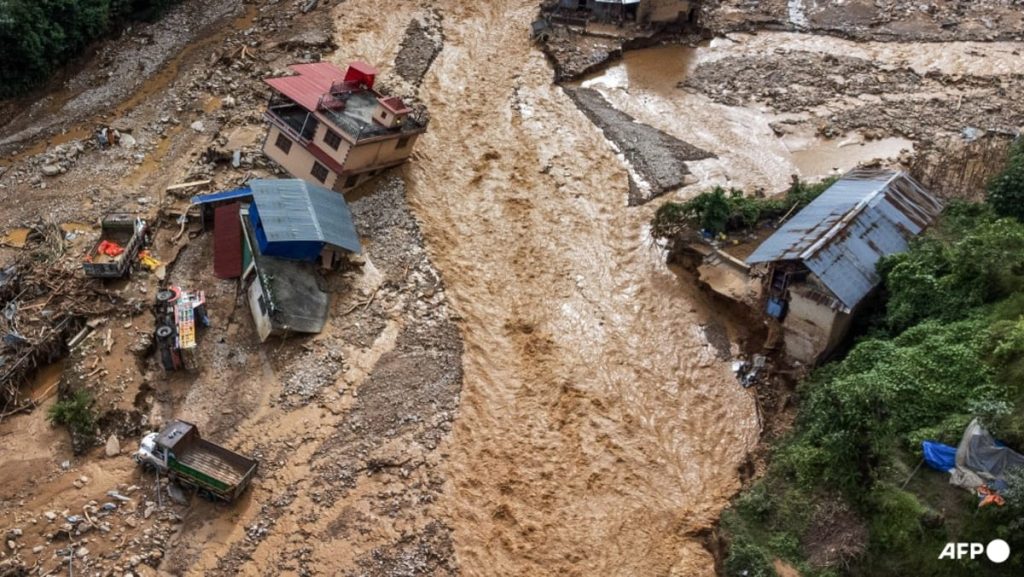Survivors of the devastating monsoon floods in Nepal have criticized the government for their inadequate relief efforts. The disaster claimed the lives of at least 218 people, with deadly floods and landslides being common occurrences in South Asia during the monsoon season, exacerbated by the effects of climate change. Many areas across Nepal, including entire neighborhoods in Kathmandu and remote villages, were inundated, with residents still awaiting necessary relief efforts.
In villages like the one in Kavre district, located east of Kathmandu, residents are feeling abandoned as they struggle to cope with the aftermath of the floods. Mira KC expressed frustration at the lack of access to help, stating that no one had come to provide assistance due to the impassable roads. She questioned the value of relief efforts at this point, noting that the damage has already been done and those who have perished cannot be revived.
The floods disproportionately impacted the poorest residents of Kathmandu, particularly those living in overcrowded slums along the banks of the Bagmati River and its tributaries. Man Kumar Rana Magar, a slum resident, shared his experience of being temporarily sheltered at a school after his home was inundated. However, he expressed dissatisfaction with the authorities’ response, highlighting the lack of proper support once they were asked to vacate the school premises for its normal functioning.
The close proximity of the affected areas to the government’s headquarters raised concerns among residents like Magar, who questioned the authorities’ ability to care for the poor in their own backyard. He expressed doubt about the government’s capabilities in handling similar disasters in other regions if they struggled to provide effective relief efforts to vulnerable populations in Kathmandu. The sentiment among many survivors is that the government must do more to support those most affected by natural disasters like the recent floods.
The devastating impact of the monsoon floods has highlighted the urgent need for stronger disaster management and preparedness measures in Nepal. As climate change continues to worsen extreme weather events, the country must prioritize the protection of vulnerable communities and ensure timely and effective relief efforts in the face of such disasters. Survivors’ criticisms of the government serve as a wake-up call for improved infrastructure, coordination, and support systems that can help mitigate the devastating effects of future calamities.
In the wake of this tragedy, it is essential for the government to listen to the voices of survivors and address their grievances with a sense of urgency and compassion. By focusing on long-term solutions that prioritize the needs of the most vulnerable, Nepal can build resilience against future disasters and minimize the loss of life and property. The recent floods serve as a stark reminder of the interconnectedness between climate change, poverty, and disaster risk, underscoring the importance of proactive measures to safeguard communities and ensure their well-being in the face of escalating environmental challenges.


